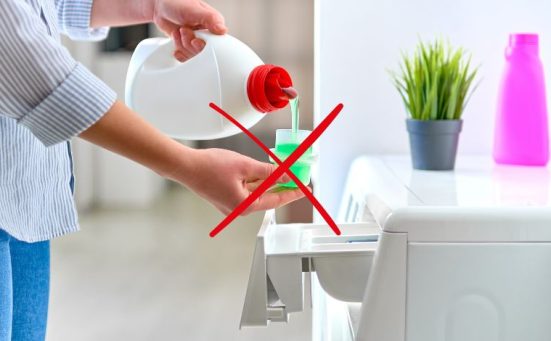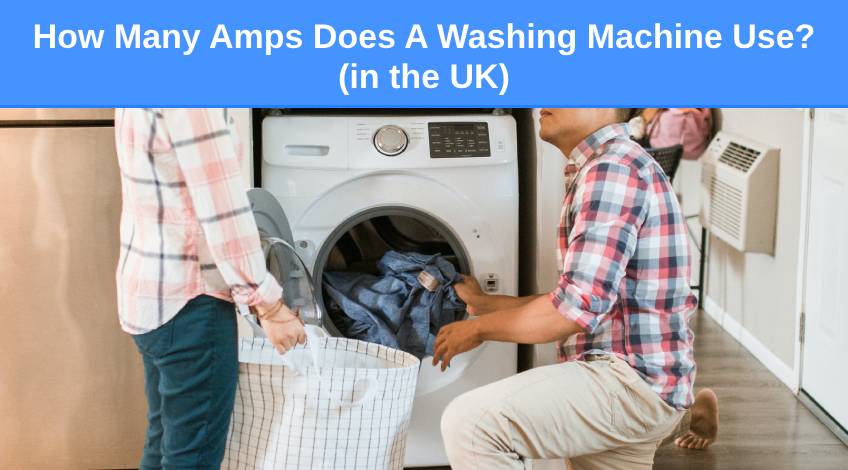
How Many Amps Does A Washing Machine Use? (in the UK)
When purchasing a washing machine we are bombarded with a ton of information. Anything from spin speed, energy efficiency, drum capacity and size.
What’s often missing is any technical information on how many watts of power it uses and what the amperage of the washer is. This information can be useful because it not only helps us calculate how much each wash load costs to run but also ensures we are protected from electrical fires or shock.
Here in the UK all standard electrical outlet power is 230 volts and a standard washing machine uses between 5 to 15 amps depending on the type of washer, the wattage, size of the motor and how old the appliance is.
How To Work Out The Amperage Of Your Washing Machine
There is a simple way to work out the amperage of your washing machine. All you need to do is divide the wattage of the appliance by the outlet voltage.
Now, we know that the standard outlet voltage in the UK is 230 volts so all you need to find is the washer’s wattage. So to find the amperage you need to use this formula;
W ÷ V = A
Where W = Watts, V = Volts and A = Amps.
For instance an 1800 watt washing machine has an amperage of 8 Amps. 7.82 to be precise but we round it up to find the safest amperage value. This is because;
1800 ÷ 230 = 7.82
This calculation will work for all size washing machines no matter how many watts they use.
Please Note: These calculations are based on the UK outlet voltage of 230 Volts. If you live in the US, you will need to know the standard outlet voltage relevant to the US which is 120 Volts.
Typical Washing Machine Wattage & Amperage
To save you the bother of calculating the amperage of your washing machine, we have listed the most typical amp requirements of a range of washing machines.
| Wattage | Amperage |
|---|---|
| 400 watts | 2 amps |
| 500 watts | 2.2 amps |
| 600 watts | 3 amps |
| 700 watts | 3.2 amps |
| 800 watts | 3.5 amps |
| 900 watts | 4 amps |
| 1000 watts | 4.5 amps |
| 1200 watts | 5.2 amps |
| 1400 watts | 6.1 amps |
| 1800 watts | 8 amps |
| 2000 watts | 9 amps |
| 2200 watts | 10 amps |
What Is The Average Amount Of Amps Washing Machines Use?
The average amount of amps washing machines use per hour is 2.5 amps. This is based on 10 of the most popular washing machines currently on the market, when using their eco wash cycle.
| Washing Machine | Average Watts/hour | Average Amps/hour |
|---|---|---|
| Samsung Series 5 ecobubble WW90TA046AE 9kg Washing Machine | 490 | 2.13 |
| Electra W1245CT0W 7kg Washing Machine | 690 | 3 |
| Hoover H-WASH 300 H3W69TME/1 9kg Washing Machine | 570 | 2.47 |
| Beko WTL82051W 8kg Washing Machine | 620 | 2.7 |
| Beko WTL92151W 9kg Washing Machine | 570 | 2.47 |
| Sharp ES-NFB814AWB 8kg Washing Machine | 550 | 2.39 |
| Indesit My Time EWD71453WUKN 7kg Washing Machine | 690 | 3 |
| Bosch Series 4 WAN28250GB 8kg Washing Machine | 460 | 2 |
| Hotpoint NSWA845CWWUKN 8kg Washing Machine | 540 | 2.35 |
| Beko WTL94121W 9kg Washing Machine with 1400 rpm – White – B Rated | 570 | 2.47 |
Please note: The actual amount of amps being used per hour will vary during the wash cycle as it performs various tasks.
How We Worked That Out
The energy label shown on all washing machines for sale in the UK features a kWh / 100 washes value for their eco cycle.
We simply take that value and divide it by 100 to work out how many kWh it uses per wash.
There’s 1,000 watts in a kilowatt, so we take that value and do our above calculation (W ÷ V = A) to find out the true amount of amps it uses per hour.
SEE ALSO: The Difference Between A And B Energy Ratings On Washing Machines (explained)
What Amperage Is Recommended For Washing Machines?
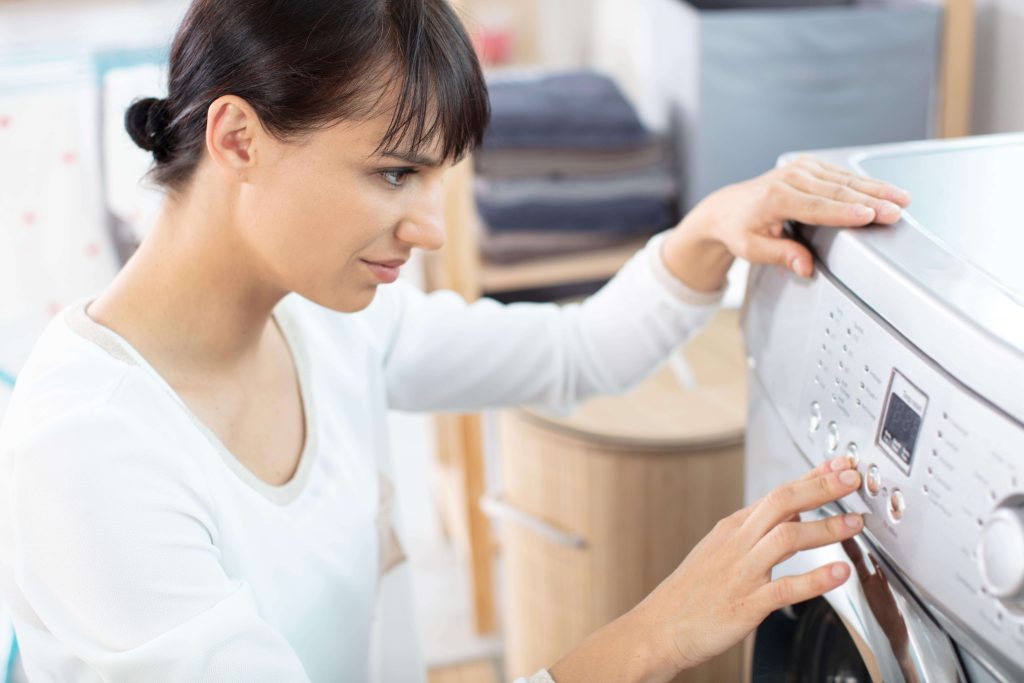
There are many electrical appliances that only need a 3 amp fuse, this applies to most electrical appliances that don’t heat up. When it comes to those appliances that do heat up which include;
- Washing Machines
- Dishwashers
- Microwaves
- Toasters
- Irons
- Kettles
A 13 amp fuse is required to prevent any serious injury or damage to the home.
What Factors Determine The Amp Requirements Of A Washing Machine
The main factors that contribute in determining the amperage requirement of a washing machine machine include;
Its Wattage Rating
The wattage measures the washer’s power usage and typically the higher the wattage, the more amps the washer needs. You can usually find the wattage rating on a washing machine by looking at the sticker on the appliance.
Once you have the wattage rating, you can get the amperage by doing the calculation above (W ÷ V = A).
The Type Of Washing Machine
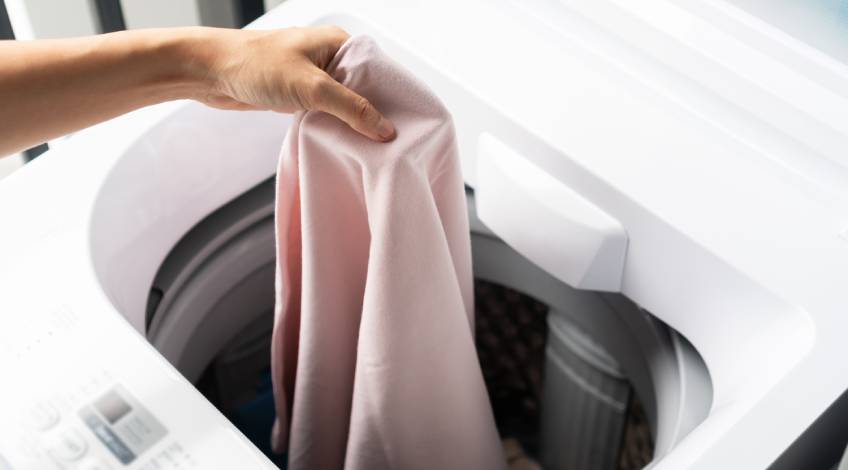
Generally speaking, front loaders and top loaders have different energy consumption rates.
A typical top loader uses somewhere between 12 to 15 amps whereas a front loader will typically use anywhere between 11 to 20 amps.
The Size Of The Washer’s Motor
Washing machines with a larger capacity tend to have larger motors and need more power to run effectively.
This is often reflected in the amperage, generally speaking, the larger the size of the motor, the bigger the amperage of the appliance.
The Washer’s Age
Typically, older washing machines are less energy efficient and therefore require more energy to work.
Newer appliances tend to be more energy efficient which results in a lower amperage.
Water Usage
In general terms, the more water the washer uses, the better the clothes are cleaned. However, that does require extra energy consumption.
Which results in a higher amperage rating.
Hot Or Cold Fill
If the washing machine has to heat the water before washing, it takes more energy which results in a larger amperage rating.
However, those washers that rely on a hot fill, taking hot water from the home’s hot water supply, require fewer amps.
What Amperage Does The Circuit Breaker Need To Be For A Washing Machine?

Firstly, the washing machine should have its own dedicated circuit in the interest of safety. It is recommended that the washing machine and dryer circuit should have an amperage rating of 20 amps.
This will ensure the appliance doesn’t keep blowing the breaker whilst ensuring the safety of the user and the home’s electrical system.
How Many Amps Does A Washing Machine Require?
As can be seen from the above list, even the most power hungry washing machine shouldn’t require any more than 10 amps. This means in the interests of safety, you should connect the washer to at least a 13 amp circuit breaker.
This allows enough leeway to allow some overloading without causing any problems like blowing the fuse or tripping the circuit breaker.
However, if you intend to run a dryer as well, it is recommended that you install a 20 amp breaker.
How To Save Energy When Using The Washing Machine
We are all looking at ways to reduce our energy usage and lower our bills. You can generally reduce the power consumption of your washing machine by following these tips;
Select The Cold Wash Cycle
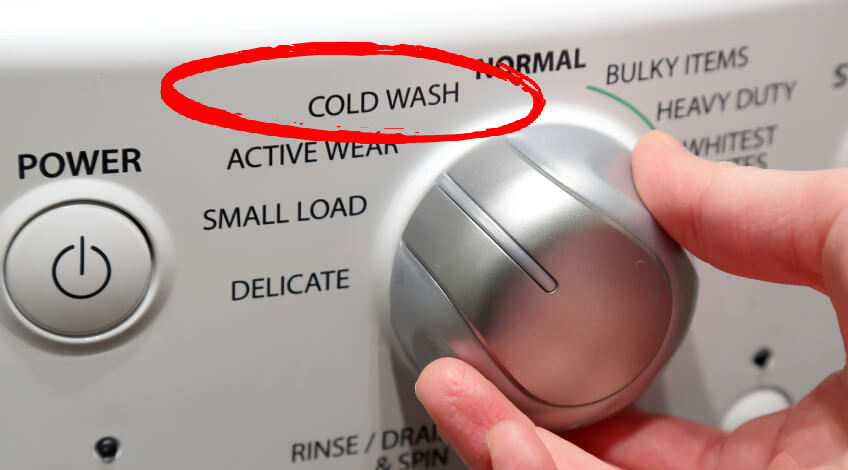
You really only need to use a hot wash for really soiled laundry. Most general wash loads will wash adequately using a cold 30 C wash cycle. Modern detergents are designed to work at lower temperatures so you don’t need to use hot water washes to get clothes clean.
Using the cold wash on your machine will save energy because the washer will not need to heat the water to high temperatures to get the clothes clean.
Select The Eco Wash Option
All new washing machines have an eco wash option which will save water and energy. The only downside to using the eco wash is it takes longer.
If you need those clothes in a hurry, select a different cycle, but if there’s no real hurry for the laundry, select the eco wash mode and save energy, water and money.
Select A Low Spin Speed
The spin speed controls how many revolutions the drum makes every minute. The faster the spin speed, the faster the water is removed from the laundry.
However, the faster the spin speed and the more energy needed by the machine to turn the drum at this increased rate. By selecting a lower spin speed you can save on energy and then allow the clothes to air dry which costs nothing at all.
Leave The Spin Cycle Out Altogether
There are certain lighter fabrics which dry quickly even without spinning. If you are washing lighter items it is possible to give the spin a miss and simply air dry the clothes.
Always Wash A Full Load
Your washing machine will use the same amount of power to wash a full load or a half load. To save energy you should always wait until you have a load capable of filling the drum to around the ¾ full mark.
However, you should never overload the drum as this will result in the laundry not getting washed properly at all.
Select The Quick Wash Cycle

If you do find that you only have a few items that need washing, select the quick cycle. Most washers have a quick wash option with many having a 15 minute wash cycle.
This means that those few items can be washed and spun in as little as 30 minutes in total. This saves time, energy and money.
Always Use The Correct Detergent In The Right Quantity

Using the wrong type of detergent or too much detergent causes your washer to work harder. This is because of the excess soap suds produced.
If your washer detects too many soap suds, it will need to work harder to remove them which uses more energy.
Presoak Heavily Soiled Items
Instead of running those exceptionally dirty clothes through 2 wash cycles because the stains weren’t removed the first time around, presoak them first.
Pre-soaking dirty items can loosen the stains allowing them to be washed out first time. This saves energy and money in the long run.
Never Leave The Washer On Standby
Even though leaving the washer on standby when it’s not in use doesn’t use lots of energy, it is still using some power.
You should always turn the wall socket off when you’re not using the washing machine to save energy.
Consider Buying A More Energy Efficient Machine
If you own a fairly old washing machine, consider replacing it with a newer, more energy efficient model.
Using an energy efficient machine combined with all of the energy saving tips above can result in significant energy savings overall.
SEE ALSO: Does A Kettle Use Electricity When Plugged In?
SEE ALSO: Kitchen Socket Height Above Worktop (must-know regulations)
Frequently Asked Questions
A standard washing machine typically uses anywhere between 400 to 2000 watts of electricity. This equates to between 2 to 10 amps used on average.
You can work out how many amps your appliance uses by dividing the watts by the voltage. In the UK the standard voltage is 230 volts so a washing machine that uses 2000 watts typically uses around 9 amps.
You will need a 13 amp fuse in the plug of your washing machine. The same is true of any appliance that heats up including a toaster, microwave and electric kettle.
Also, follow us on Pinterest ...

